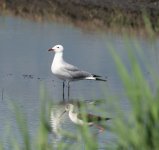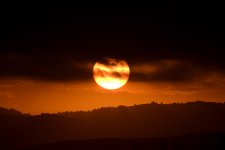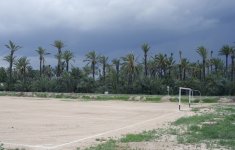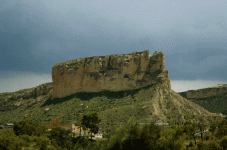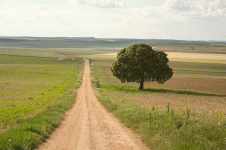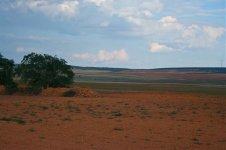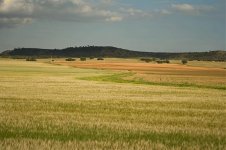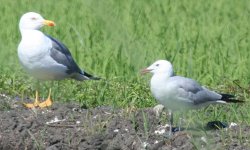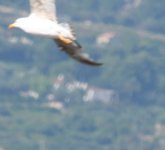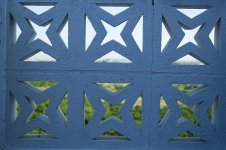lou salomon
the birdonist
hello all,
valencia and alicante are well known areas for european birders holding a couple of very rare wp-species like red-knobbed coot and white-headed duck. in addition to the coastal sites i spent 25 hours inland in the province of castilla la mancha, albacete region, for “steppe” species like larks, bustards and sandgrouse.
since i’m busy with raising small children i haven’t been out on pure birding trips for 3 and a half years, so for me this was great fun – being outside, alone, driving through impressing countrysides, sleeping under open sky and, of course – intense birdwatching.
with the help of jules sykes i managed to see a total of 10 lifers which is about double the number that i had expected! jules is the man to contact or hire as a guide if you are unfamiliar with the region, being proved by many birder’s trip reports. have a look at his website:
http://www.olivaramatours.com
10.06.
at noon, jules picked me up at valencia-airport and helped me with hiring a car. we headed north and visited moro-marshes where we spent half the afternoon. immediately after getting out of the car the first flock of audouin’s gulls flew overhead. moro marshes is a natural reserve with many ponds and extended reedbeds close to the coast. it offered sightings of 4 little bittern, many great reed warbler, a southern grey shrike and, most important, a couple of red-knobbed coot plus an adult purple swamp-hen feeding a fully grown juvenile.
after 1 hour drive south to oliva where jules’ familiy is running the “olivarama” bed and breakfast pension i spent the evening at pego-marshes, which is within a 10 min drive south of oliva. dark clouds of the passing thunderstorms of the last days were still clutching to the mountaineous inland and provided a few alpine swifts and a red-rumped swallow to join the masses of common swifts, swallows and house martins over the paddyfields at sunset. inside the paddyfields large numbers of herons/egrets (purple, grey, squacco & night heron, cattle and little egret as well as little bittern in the reeds), some juvenile red-crested pochards, numerous teritorial black-winged stilts and again, close views of about 50 resting and feeding audouin’s gulls. finally, in the reedbeds near a canal i found the sought after moustached warbler, a singing male. after sunset, at 10 p.m. driving back on the dirt roads bordering the paddyfields some red-necked nightjars were sitting on the roads with their large glooming eyes. slept at “olivarama”.
11.06.
this day julian sykes guided us (an english couple and me) to some interesting sites in the alicante region (7:00-17:00 inclusive drives).
we started with excellent views of a rufous-tailed scrub robin (or rufous bush chat, however you want) on the ground in a coastal pine wood near santa pola, also singing! exercisies in pallid swift id. the closeby reserve clot de galvany provides 2 hides for purple swamp-hen (1 adult) and 3 white-headed duck (ad male, 2cy male and a female). also some hoopoes, little owl (which is really abundant in spain), a juv. spanish green woodpecker with its whimbrel-like call and 4-5 red-rumped swallows.
the salines south of santa pola held large numbers of breeding yellow-legged gulls (now with 2-3 weeks old chicks), some slender-billed gulls, kentish plover, ca. 300 feeding greater flamingo etc.;
after lunch we visited a colony of collared pratincoles, saw a stone curlew, a distant flying glossy ibis (once rare it now becomes more and more regular in this area), displaying lesser short-toed larks and some rollers. they nest in palm trees in the holes of spanish green woodpecker. a short-toed eagle and two nice hunting male montague’s harrier showed up. all these were in the outskirts of the large el hondo natural reserve (the lagoon not being visible from the roads). over the lagoon an incredibly large flock of apparently many thousends swifts/swallows/martins gathered to feed in front of the menacing dark blue thunderstorm clouds – and us savouring that athmosfere…
soon i’ll continue with this day's evening and a list of all species seen. cheers for the moment.
valencia and alicante are well known areas for european birders holding a couple of very rare wp-species like red-knobbed coot and white-headed duck. in addition to the coastal sites i spent 25 hours inland in the province of castilla la mancha, albacete region, for “steppe” species like larks, bustards and sandgrouse.
since i’m busy with raising small children i haven’t been out on pure birding trips for 3 and a half years, so for me this was great fun – being outside, alone, driving through impressing countrysides, sleeping under open sky and, of course – intense birdwatching.
with the help of jules sykes i managed to see a total of 10 lifers which is about double the number that i had expected! jules is the man to contact or hire as a guide if you are unfamiliar with the region, being proved by many birder’s trip reports. have a look at his website:
http://www.olivaramatours.com
10.06.
at noon, jules picked me up at valencia-airport and helped me with hiring a car. we headed north and visited moro-marshes where we spent half the afternoon. immediately after getting out of the car the first flock of audouin’s gulls flew overhead. moro marshes is a natural reserve with many ponds and extended reedbeds close to the coast. it offered sightings of 4 little bittern, many great reed warbler, a southern grey shrike and, most important, a couple of red-knobbed coot plus an adult purple swamp-hen feeding a fully grown juvenile.
after 1 hour drive south to oliva where jules’ familiy is running the “olivarama” bed and breakfast pension i spent the evening at pego-marshes, which is within a 10 min drive south of oliva. dark clouds of the passing thunderstorms of the last days were still clutching to the mountaineous inland and provided a few alpine swifts and a red-rumped swallow to join the masses of common swifts, swallows and house martins over the paddyfields at sunset. inside the paddyfields large numbers of herons/egrets (purple, grey, squacco & night heron, cattle and little egret as well as little bittern in the reeds), some juvenile red-crested pochards, numerous teritorial black-winged stilts and again, close views of about 50 resting and feeding audouin’s gulls. finally, in the reedbeds near a canal i found the sought after moustached warbler, a singing male. after sunset, at 10 p.m. driving back on the dirt roads bordering the paddyfields some red-necked nightjars were sitting on the roads with their large glooming eyes. slept at “olivarama”.
11.06.
this day julian sykes guided us (an english couple and me) to some interesting sites in the alicante region (7:00-17:00 inclusive drives).
we started with excellent views of a rufous-tailed scrub robin (or rufous bush chat, however you want) on the ground in a coastal pine wood near santa pola, also singing! exercisies in pallid swift id. the closeby reserve clot de galvany provides 2 hides for purple swamp-hen (1 adult) and 3 white-headed duck (ad male, 2cy male and a female). also some hoopoes, little owl (which is really abundant in spain), a juv. spanish green woodpecker with its whimbrel-like call and 4-5 red-rumped swallows.
the salines south of santa pola held large numbers of breeding yellow-legged gulls (now with 2-3 weeks old chicks), some slender-billed gulls, kentish plover, ca. 300 feeding greater flamingo etc.;
after lunch we visited a colony of collared pratincoles, saw a stone curlew, a distant flying glossy ibis (once rare it now becomes more and more regular in this area), displaying lesser short-toed larks and some rollers. they nest in palm trees in the holes of spanish green woodpecker. a short-toed eagle and two nice hunting male montague’s harrier showed up. all these were in the outskirts of the large el hondo natural reserve (the lagoon not being visible from the roads). over the lagoon an incredibly large flock of apparently many thousends swifts/swallows/martins gathered to feed in front of the menacing dark blue thunderstorm clouds – and us savouring that athmosfere…
soon i’ll continue with this day's evening and a list of all species seen. cheers for the moment.
Attachments
Last edited:




